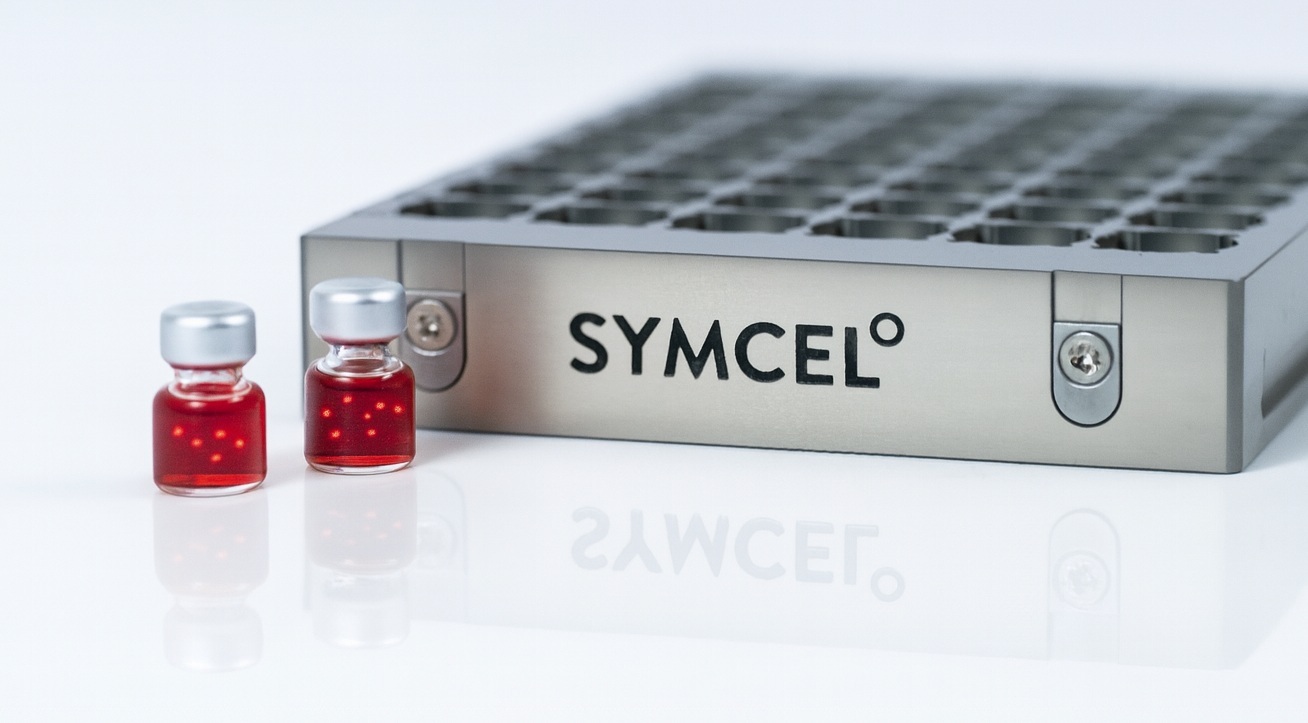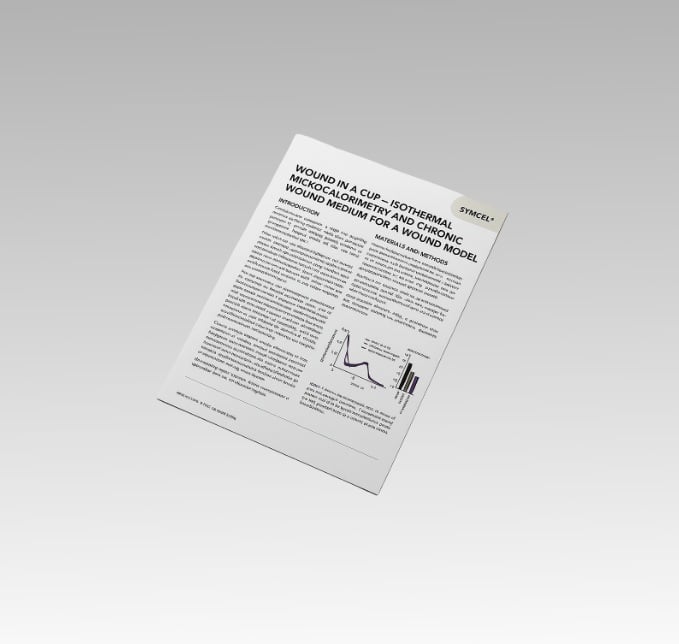- Home >
- Applications >
- Biofilm >
- Wound testing
CLINICALLY RELEVANT WOUND TESTING
Faster, more predictive measurements for antimicrobial products that truly work
The future of wound research and testing
Chronic wounds represent a major healthcare challenge, and current in vitro models fall short. Simple agar- or surface-based assays fail to capture the complexity of the wound environment, leading to misleading conclusions about treatment efficacy. This results in costly failures during clinical translation and ineffective patient care.
The Symcel calScreener™, combined with a clinically relevant chronic wound medium, directly addresses this gap. It enables a true “wound in a cup,” where biofilm aggregates grow under conditions that mimic wound chemistry and microenvironments. With continuous, non-destructive measurements of metabolic activity, the system reveals how treatments, dressings, or compounds impact biofilms in real time — without disturbing them. Even slow-growing or dormant subpopulations, often missed by traditional CFU counts, are detected through their metabolic heat.
Welcome to next-generation wound research.

WOUND TESTING WITH BIOCALORIMETRY
Isothermal microcalorimetry measures heat flow with extreme sensitivity. The wound model provides a dynamic readout of how biofilm aggregates form, persist, and respond to treatments inside a wound-like microenvironment.
In contrast to simple in vitro assays, the wound model incorporates chemical complexity, host-like proteins, fluctuating oxygen, and subpopulations that drive persistence. This means treatment effects are tested against settings that closely resemble clinical wounds, providing more predictive and translational results.

Test dressings, creams, powders and new formulations
By bringing wound complexity into a controlled model system, biocalorimetry unlocks real-time data on antimicrobial activity, healing dynamics, and biofilm survival. This empowers you to succeed or fail faster — to evaluate treatments after screening, but before moving into animal tests or computer simulations.
Assess how active components influence wound biofilms — true clinical infection biology:
- Detect aggregates without disrupting them
- Reveal slow-growing or dormant subpopulations often missed by standard assays
- Obtain continuous, phenotypic readouts of bacterial activity in real time
- Evaluate treatment efficacy directly in the biofilm environment, preserving native structure and interactions

WOUND IN A CUP — COMPLEXITY MADE SIMPLE
The calScreener™ Chronic Wound System enables testing directly in chronic wound medium, designed to replicate the chemical composition of real wound exudates. Biofilm dynamics are monitored continuously without extraction or manipulation. This preserves the biofilm’s structure and allows detection of even viable but non-culturable cells that continue to drive chronic infection.
- No dyes
- No reagents
- No disruption

Resources & Insights
Documents




.jpg?width=788&height=443&name=iStock-1354172647%20(1).jpg)